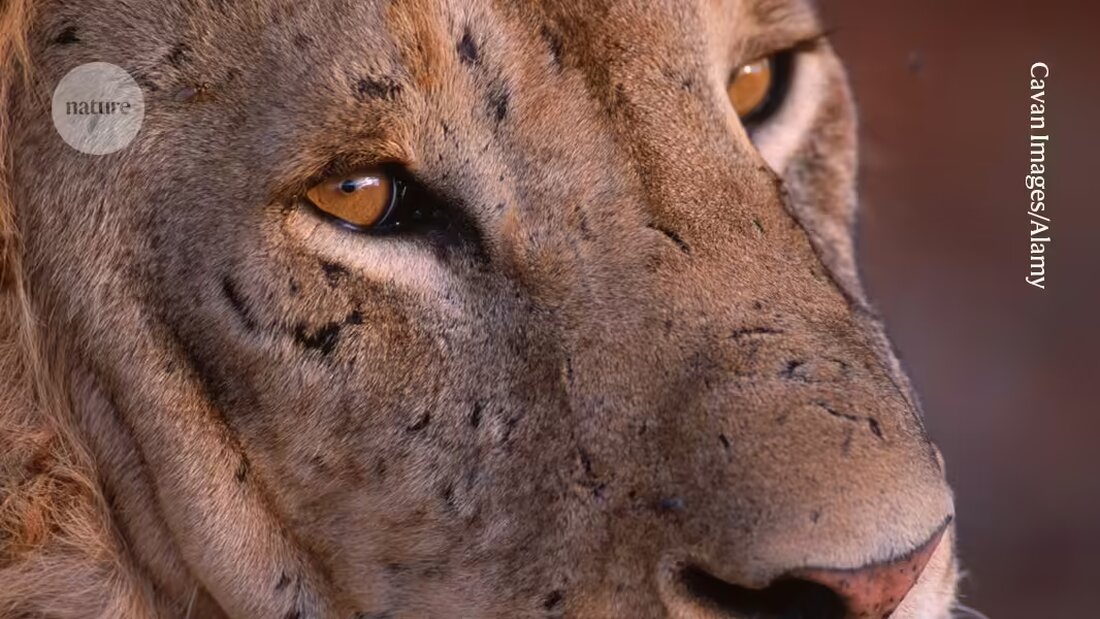Famous lion diet revealed: DNA shows humans were also among their prey
DNA analysis reveals that famous lions in the 19th century had humans among their victims. Researchers discover surprising dietary diversity.

Famous lion diet revealed: DNA shows humans were also among their prey
In the broken teeth of famous lions killed in the nineteenth century, hair was found to provide insight into their diet – including humans 1.
Only a few wild lions (Panthera leo) are as well known as the “man-eaters of Tsavo,” two large, maneless male lions that terrorized workers building the Kenya-Uganda railway until they were shot in 1898 by the railroad administrator, Lt. Col. John Henry Patterson. The exact number of their victims is unknown, but they probably killed at least 31 people near the Tsavo River in Kenya 2.
The Tsavo lions were exhibited at the Field Museum in Chicago, and by 2001 thousands of hairs had been extracted from a cavity in one of their teeth. At this point, the researcher and his colleagues could only examine the hair under a microscope.
Advances in Ancient DNA Research
“Research on ancient DNA has made great progress,” says co-author Ripan S. Malhi, an anthropological geneticist at the University of Illinois at Urbana-Champaign. “You no longer necessarily need a follicle cell on a hair,” um Extract and read DNA. “It is possible to do it directly from the hair shaft itself.” Using these techniques, Malhi and his colleagues identified hairs from giraffes, oryx, waterbucks, wildebeests, zebras and humans in the sample. Their report was published today in Current Biology.
The Wildebeest were the biggest surprise. There were no wildebeest near the railroad workers' camp, says co-author Alida de Flamingh, an evolutionary biologist at the University of Illinois. The nearest herds were 90 kilometers away. “Either these lions roamed larger areas, or there were historically wildebeest in the Tsavo region,” explains de Flamingh.
Although the researchers could conduct further analysis to uncover more information about human DNA, they provided minimal details about it in their published paper. The next step will be “to work with the local community and local institutions,” says Malhi. “There may be descendants or a community of descendants who may or may not want such an analysis to be done – we just don’t know yet.”
Graham Kerley, an ecologist and lion specialist at Nelson Mandela University in Gqeberha, South Africa, says the list of species whose DNA lingers in the predator's teeth isn't particularly surprising. For him, the key takeaway is the importance of preserving biological samples so they can be reanalyzed at a later date as tools improve. “Patterson had no idea when he shot those lions what incredible information would come to light more than a hundred years later,” Kerley says.
That's exactly the message the researchers wanted to convey, explains de Flamingh. “We hope that others will try to apply the methodology developed here to study prey biology or the history of other animals – perhaps even further back to extinct species.”
-
De Flamingh, A. et al. Curr. Biol. https://doi.org/10.1016/j.cub.2024.09.029 (2024).
-
Peterhans, J. C. K. & Gnoske, T. P. J. East Af. Nat. Hist. 90, 1–40 (2001).

 Suche
Suche
 Mein Konto
Mein Konto
